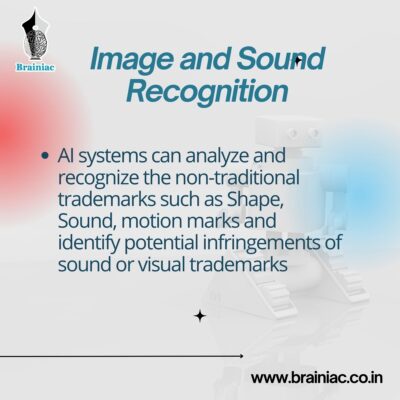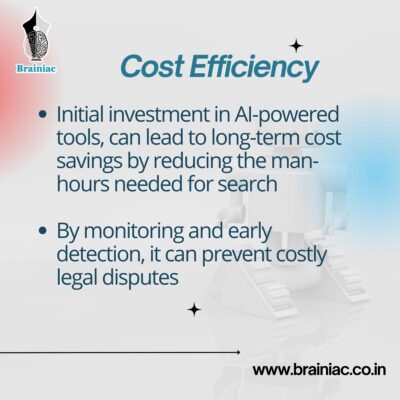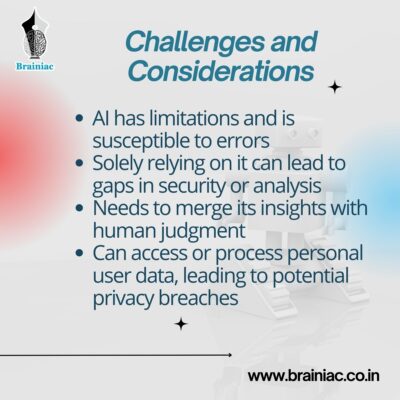In today’s rapidly evolving technological landscape, Artificial Intelligence (AI) is reshaping numerous industries, ushering in innovations that were previously thought to be the stuff of science fiction. One such domain experiencing this transformative shift is the world of trademarks. Trademarks, which have long been the cornerstone of brand protection, are now intersecting with AI technologies in intriguing ways. The use of Artificial Intelligence (AI) in the realm of trademarks is an emerging and exciting field, particularly in the areas of search and monitoring.
Efficiency in Searches:
Speed: Traditional trademark searches, while thorough, can be time-consuming. AI speeds up this process by quickly sifting through vast databases of existing trademarks, providing results in a fraction of the time.
Comprehensiveness: AI can analyze vast datasets that might be unfeasible for manual searches. This ensures that even obscure or lesser-known trademarks aren’t overlooked.
Pattern Recognition: Beyond just textual matches, AI can recognize patterns, designs, and logos, offering a more comprehensive search experience.
Accuracy and Predictive Analysis:
Fewer Oversights: With continuous learning capabilities, AI systems can reduce errors and omissions, ensuring more accurate search results.
Risk Assessment: Some advanced AI tools can predict potential opposition or objections to a new trademark application based on historical data.
Image and Sound Recognition:
- With the rise of non-traditional trademarks such as sounds, shapes, and motion marks, AI’s ability to analyze and recognize audio and visual data is invaluable. For example, AI can sift through media files to identify potential infringements of sound or visual trademarks.
Continuous Monitoring:
Real-time Alerts: AI-powered monitoring tools can offer real-time alerts on potential infringements, enabling brands to take timely action.
Global Surveillance: AI can monitor multiple databases, websites, and platforms worldwide, ensuring comprehensive protection of a trademark across borders.
Machine Learning and Adaptation:
As AI systems are exposed to more data, they can refine their search and monitoring algorithms, resulting in improved accuracy and relevancy over time.
Cost Efficiency:
While there’s an initial investment in AI-powered tools, they can lead to long-term cost savings by reducing the man-hours needed for search and monitoring and by preventing costly legal disputes through early detection.
Integration with Other Digital Tools:
AI can be integrated with other digital platforms, such as domain name registrars or e-commerce platforms, to monitor and flag potential trademark infringements instantly.
Challenges and Considerations:
Reliability Concerns: AI, despite its advanced capabilities, has limitations and is susceptible to errors. Solely relying on it can lead to gaps in security or analysis. Thus, it’s imperative to merge its insights with human judgment. By pairing AI with human expertise, one can harness both the computational power of machines and the nuanced understanding of humans for robust protection.
Data Privacy: Utilizing AI to oversee online platforms can inadvertently access or process personal user data, leading to potential privacy breaches. As brands adopt such monitoring tools, it becomes their responsibility to ensure data handling aligns with privacy laws and user expectations. Balancing the benefits of AI-driven surveillance with the ethical obligation to protect user privacy is crucial for maintaining trust and compliance.
In conclusion, AI is revolutionizing the domain of trademark searches and monitoring by offering efficiency, comprehensive analysis, and real-time insights. As the technology evolves, its role in trademark management will likely become even more pronounced.









